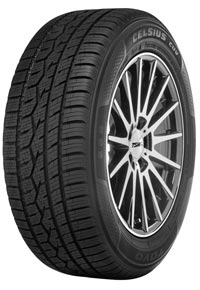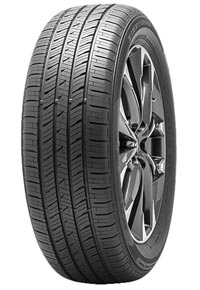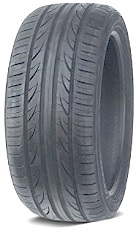Your Shopping Cart
Your cart is empty.
Subtotal ( items)
Instant Rebate Applied:
Promo Code Applied: ID.me Discount Applied:
Have a Promo Code?
Size:
Item
Item
Selected for:
/ each
Add-Ons
Wireless air pump capable of pumping up to 150 psi with 2000 MAH power bank.



Fully protect your clothes and vehicle interior during transportation of your tires. For Tires up to 31" tall and wheels up to 22".
Per sensor
Add TPMS Sensors
/per sensor
Please confirm the make, year, model and trim of the vehicle you want to purchase for:
How many sensors do you need?
The vehicle you have selected is not compatible with aftermarket TPMS Sensors.
Enter a different vehicle to add TPMS sensors

 Front Tire Size:
Front Tire Size:
 Rear Tire Size:
Rear Tire Size:
 Your Vehicle:
Your Vehicle:
Pros & Cons of Staggered Fitment

Attractive Design

Improved Handling

Improved Cornering
Bumpier Ride
Poor Traction in Snow
How do I find my tire size?



Need help?
 Your Vehicle:
Your Vehicle:
Pros & Cons of Staggered Fitment

Attractive Design

Improved Handling

Improved Cornering
Bumpier Ride
Poor Traction in Snow
How do I find my tire size?



Need help?
Pros & Cons of Staggered Fitment

Attractive Design

Improved Handling

Improved Cornering
Bumpier Ride
Poor Traction in Snow
Need help?
Need help?
How do I know if I have an LT tire?

 Your Vehicle:
Your Vehicle:
Sorry, we could not find any available
wheels for your sizing selections.
Need help?
What You Need to Know About Tire Tread Patterns
By Tire Agent Staff
January 07, 2022
Understanding Basic Anatomy of Tire Treads & Tire Tread Patterns
Tire treads have four basic parts: the ribs, the grooves, the tread blocks, and the sipes. These tread patterns aren't just there for looks; they each have their own purpose, which we will explain as you read on. We'll also explain what the three basic types of tread patterns are for, which will help you decide what's best for your vehicle.
And, who knows, this knowledge might even make you a little more interesting at parties, as long as you don't go on too long about it.
If you'd prefer not to nerd out over tire tread anatomy and want to get straight to shopping, don't let us get in the way. Click "Shop New Tires Now" to get started. Otherwise, Tread Nerds, scroll on to read about ribs, grooves, blocks, and sipes.
4 Tire Tread Parts
As fans of true-crime TV and podcasts know, tire tread patterns have been key to solving many crimes. Vehicles leave their own "fingerprints" in the form of tire tracks, not only revealing the make and model of the tire but also helping detectives narrow to the make and model of suspicious vehicles.
But that's not why you're here. You're here to learn tire tread lingo. First up, let's define these four tire parts.
1. Tread blocks
What are tread blocks? These are the raised parts of the tire that make contact with the road. The block provides traction.
2. Tire ribs
Tire ribs are the raised section of the surface of the tire, a collection of tread blocks. What do tire ribs do? Well, think about the job of a tire: A vehicle tire must ...
- grip whatever surface it's driving on
- prevent a vehicle from sliding on water, ice, or snow
- stop when the driver brakes
- resist hydroplaning
- improve fuel efficiency
- ... all while providing a smooth and quiet ride
This is the job of the tire tread, and the rib plays a significant role in vehicle stability.
Photo from US Department of Homeland Security, "What Everyone Member of the Trade Community Should Know About Tires."
3. Tire grooves
Tire grooves are the deep channels between the ribs and tread blocks. They have an important job, especially in rain, snow, ice, slush, and mud. The grooves are designed to push those elements away from the car so the tires grip the road better. So, the next time you're a pedestrian and you get splashed by a car? That's the grooves at work.
4. Tire sipes
Sipes are thin "cuts" that are molded into the blocks. Unlike grooves, which run the circumference of the tire, sipes are smaller and thinner grooves that provide more flexibility in tires. You want sipes in on- and off-road tires, loose dirt and gravel and, of course, ice and snow.
Putting Them All Together: Tire Tread Patterns
So, put ribs, blocks, grooves and sipes together and you've got your tread pattern. Most patterns fall into one of three categories: symmetrical, asymmetrical, and directional. There's also a less common directional/asymmetrical pattern, which is found in ultra-high-performance tires.
Asymmetrical tire patterns
- Quiet
- Aquaplaning protection
- Increased grip on corners
- Good for high-performance vehicles
- All weather
Asymmetrical tread patterns have two distinct tread patterns: an inner pattern and an outer pattern. The inner pattern is all about handling in wet conditions and preventing a vehicle from hydroplaning. The outer pattern is all about grip, especially on curves and corners. This type of tire is popular on high-performance vehicles.
An example of the asymmetrical tread pattern is in Toyo's Celsius CUV for SUVs and light trucks. The asymmetrical design offers steady grip and handling in wet or dry driving conditions.
You have to be careful when rotating asymmetrical tires; follow the manufacturers' recommendations. Tires with asymmetrical tread patterns typically have "this side out" on the sidewall of the tire that always must be facing out of the vehicle. Do only front-to-back and vice versa rotations.
Symmetrical tire patterns
- Quiet
- Low rolling resistance
- Fuel efficient
- Longer tread life
- Good for commercial vehicles
A Symmetrical tread pattern has the same patterns on the inside and outside blocks of the tires.
Symmetrical tread patterns provide the smoothest driving experiences. This is the most common type of tread pattern. Both halves of the tire have the same pattern. They also tend to offer the quietest rides, low rolling resistance, and best fuel efficiency.
They are ideal for most passenger vehicles, but not necessarily for high-performance vehicles, and symmetrical tread patterns aren't usually found on all-weather or winter tires. If you're looking for an economical tire that will last a long time, choose one with a symmetrical tire pattern. These tires can be rotated several times, which extends the life of the tires.
Kumho ECO Solus KL21 has a symmetrical tread pattern -- no matter which way you turn the wheel, the pattern is the same.
Directional tire patterns
- Good handling in snow
- Excellent handling for sports cars on wet roads
- Protects against hydroplaning
- Performance and grip come with slightly higher cost
Directional tire patterns are designed to make sure the tire rolls in one direction. That doesn't mean you can't back up a vehicle on the tire. It simply means that the treads are designed to move a vehicle forward, especially through snow and wet conditions. Many winter tires have directional tread patterns. What this means, though, is that you can't rotate directional tires from side to side; you can, however, rotate them front to back and vice versa.
You can see an example of the directional tread pattern in Lionhart's LH-503 all-season tires.
Directional/Asymmetrical Tire Patterns
We mentioned the less-common directional asymmetrical tire tread pattern. It's an uncommon tire pattern, and tires with these patterns are only left or right-side vehicles. They cannot be rotated from the driver side to the passenger side or vice versa. These types of treads are found on competition tires, as well as ultra-high performance tires.
How to Qualify for the $50 Offer
- Add items to your cart and begin checkout.
- Select PayPair and apply for financing.
- If you’re approved by a participating lender, you’ll see a $50 promotional rebate applied to your order total.
-
To receive the $50, you must:
- Complete your purchase with a qualifying lender,
- Agree to the payment terms,
- And make the required number of consecutive on-time payments, as specified by the lender.
Note: Offer available only through select lenders. Additional eligibility requirements and conditions apply. Rebate may be issued after verification of qualifying payment activity. Terms subject to change.
How to Purchase Tires and Wheels
With a Payment Plan
Tire Agent's payment plans make it easy to get the best partial or full set of tires and wheels for your vehicle.
It's fast, secure and won't affect your credit score
Match with multiple lenders
Why Choose PayPair?
PayPair’s Partners and Plans

No Money Down

No Money Down

No Credit Needed*

No Money Down

$1 to Start!*

No Money Down

No Credit Needed*

$1 to Start!*

No Money Down
Other Payment Plans

$0 to Little Down

Pay with your bank account

Simplified checkout experience

Faster and easier than using cards or cash

Simplified checkout experience

Faster and easier than using cards or cash
*SNAP: The advertised service is a lease-to-own agreement provided by Snap RTO LLC. Lease-to-own financing is not available to residents of Minnesota, New Jersey and Wisconsin. NO CREDIT NEEDED: Not all applicants are approved. While no credit history is required, Snap obtains information from consumer reporting agencies in connection with applications, and your score with those agencies may be affected. PAYMENT PLAN: The standard plan consists of renewable lease terms. To exercise an early ownership, consumers must make regular payments on time and schedule additional payments via the customer portal or by contacting Customer Care at 1-877-557-3769. KATAPULT: The Promotional Initial Payment (plus any applicable taxes and fees) is due at lease signing. Your lease-purchase payment amount will be determined after you select your product(s). You will not acquire ownership of the product(s) if the total amount necessary to acquire ownership is not paid. The Promotional Initial Payment does not reduce the cost of the lease-purchase agreement. The Promotional Initial Payment is only available when shopping at Tire Agent through the Katapult mobile app and at Tire Agent’s website. Product pricing subject to change and availability. Disclosure: 90-day early purchase option (EPO) terms and conditions apply: 90-Day (3 months in CA) You can buy out your lease-to-own agreement within the first 90-days. This amount includes the cash price, plus the lease-to-own cost for the first 90-days. Taking advantage of the 90-day purchase option will save you the most money! PROGRESSIVE: Ownership by rental/lease agreement with Progressive Leasing costs more than the retailer’s cash price. Select items only. Cancel or purchase early at any time. Not available in MN, NJ, VT, WI, WY. Progressive Leasing obtains information from credit bureaus. Not all applicants are approved. Standard agreement offers 12 months to ownership. 90-day purchase options cost more than the retailer’s cash price (except 3-month option in CA). To purchase early or to cancel lease, you must call 877-898-1970. Retailer cannot activate early purchase options.




